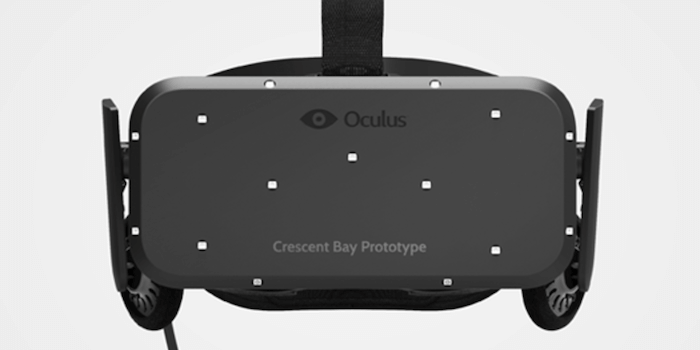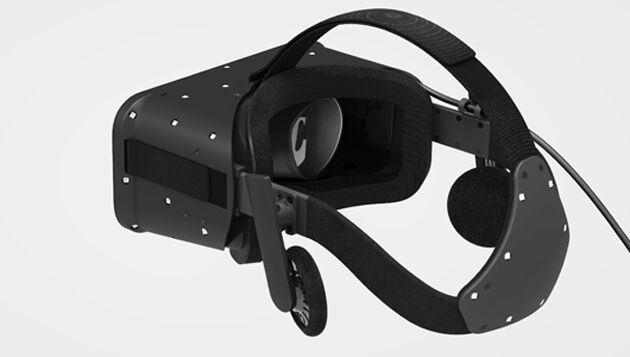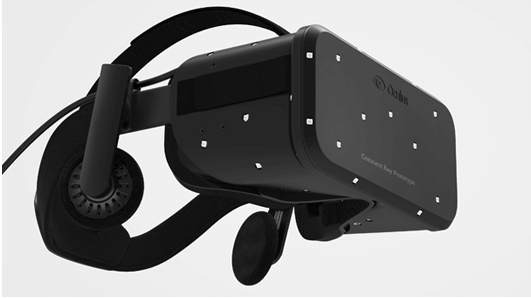While the Oculus Rift might already be one of the most exciting new pieces of tech in games, if not in general, most agree that the headset is still a work in progress. Sure, there are things about the Rift that are already extremely exciting, and worth $2 billion, but there are also places that the tech can improve.
Luckily, the Oculus VR team has been smart about regularly unveiling new updates to their software and substantial updates to their hardware. The tech is certainly getting there, and just this weekend the Oculus Rift might have taken its most substantial leap forward yet.
At this weekend's Oculus Connect conference, the Oculus VR team unveiled their new "Crescent Bay" prototype to attendees. The headset is obviously still not indicative of the eventual Oculus Rift retail model, but given the important improvements made to the device, we might say it's pretty close to the retail model.
There are two key improvements with the Crescent Bay prototype, both of which are features that users have been requesting and fans have known were coming. First up, is a series of LED lights on the back of the device, which should help the Rift deliver 360-degree motion control. [NOTE: Much like the DK2, the eventual DK3 built off the Crescent Bay will feature an LED-permeable casing, so those lights won't be visible.]
Some will remember that the Crystal Cove prototype was the first Rift version to feature motion tracking through LED, but the lights were only on the front of the device. That meant players could only turn their head so far in virtual space before the tracking device lost them. There's no word on if the Crescent Bay prototype will include a newer motion-tracking device, however.
The second big introduction for Crystal Cove is a set of built-in headphones that pipe audio directly from the Oculus headset. Rift users have long expected the Oculus VR team to build headphones into one of their models and this is the one.
However, the Oculus VR team has taken a rather smart approach and made it so the headphones can move away from their user's ears, leaving them free to use third party headphones if they like. The quality of the audio in whatever built-in headphones the Oculus Rift provide are going to be a make-or-break proposition (especially if the quality was poor), but the Oculus VR team has seemingly found a way around those concerns.
Concerned gamers should know, though, that Oculus is working hard to ensure the audio quality is up to par with Oculus' visuals. The Crescent Bay prototype even has technology licensed from the University of Maryland.
Of course, the Crescent Bay also features higher resolution visuals and lower latency, in addition to these new features. In fact, the Oculus team are calling this latest headset as big a leap forward from Development Kit 2 as the DK2 was from the first development kit. It also looks like, design-wise, that the prototype offers a snugger fit on the head thanks to the added top strap.
It's pretty clear that the Oculus Rift is now that much closer to retail with the unveiling of the Crescent Bay prototype. Some features that we knew were in the pipeline are now here, and once Oculus gets those to a level they like then there won't be much left to do aside from improving resolution and latency. In other words, the checklist is running thin and things are getting exciting.
What do you think of the new Oculus Rift prototype? Are there any features you still think the headset needs?
-
Source: Polygon



